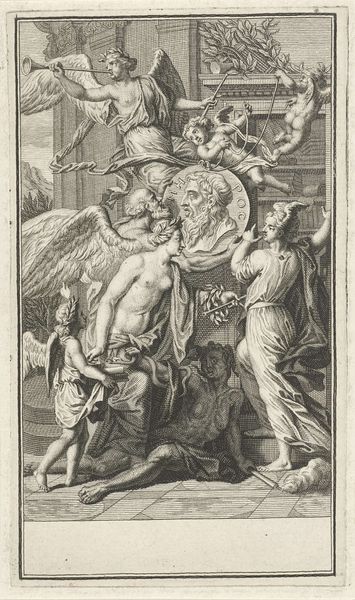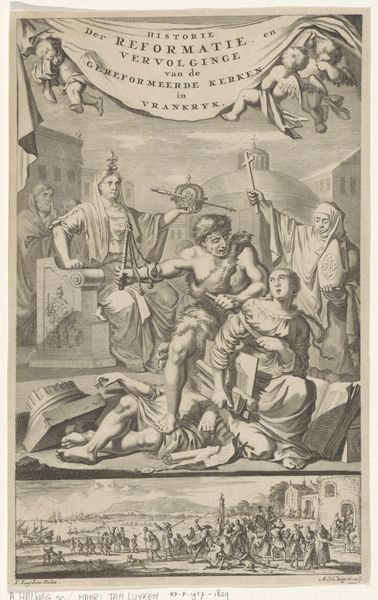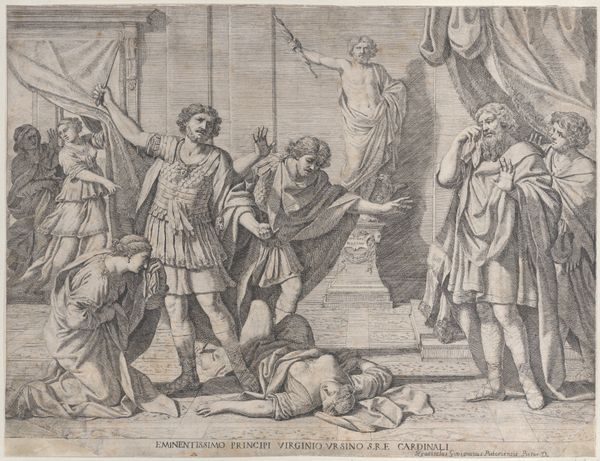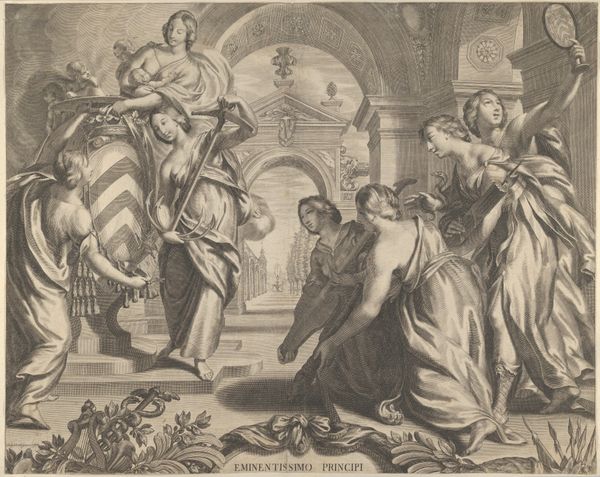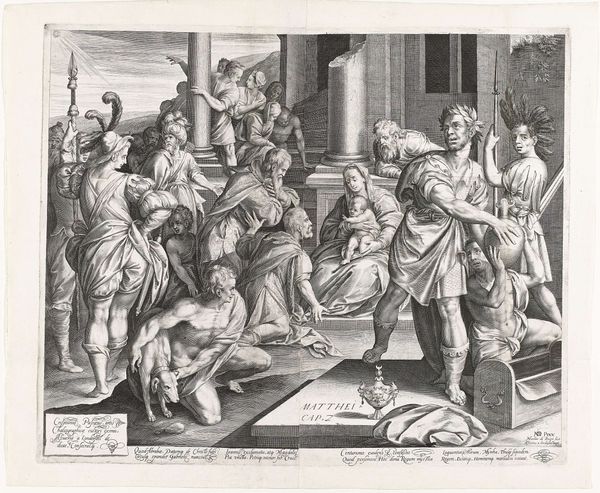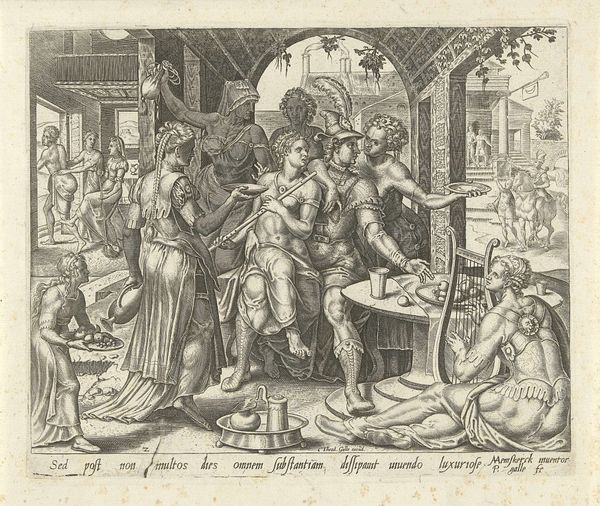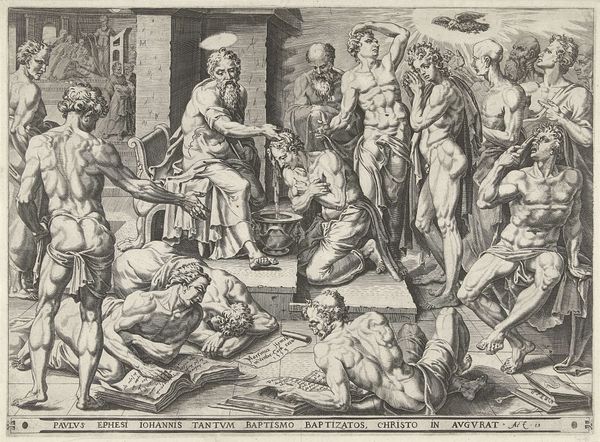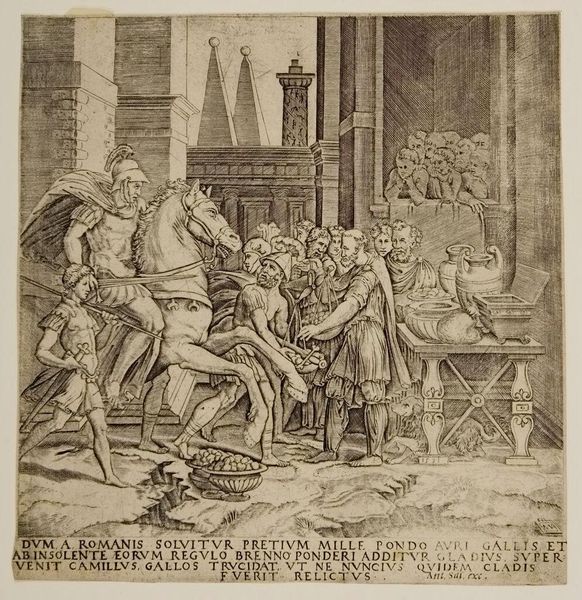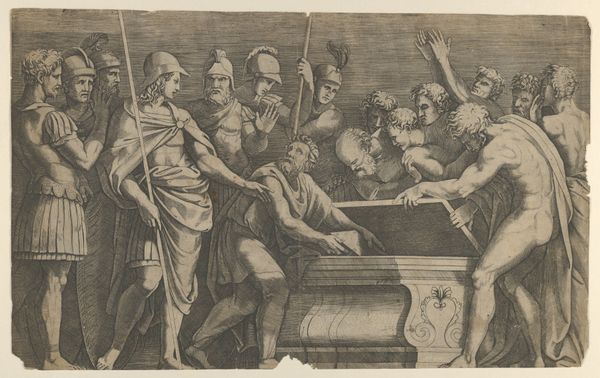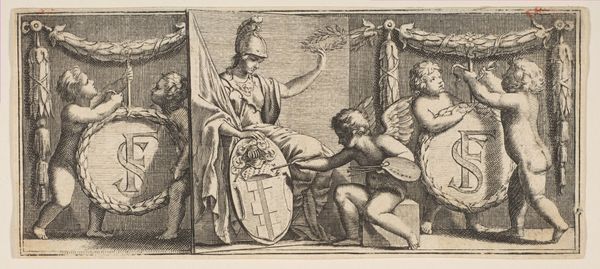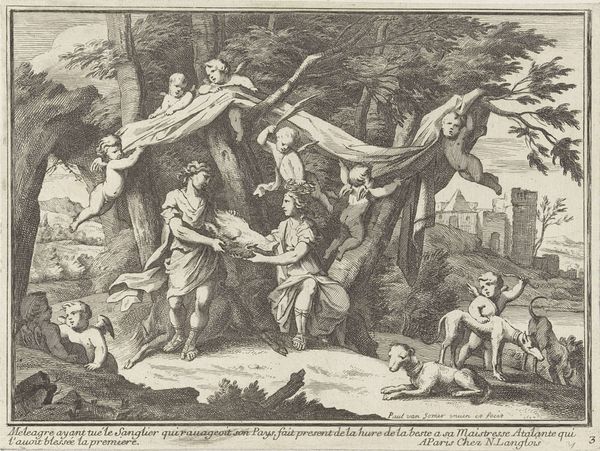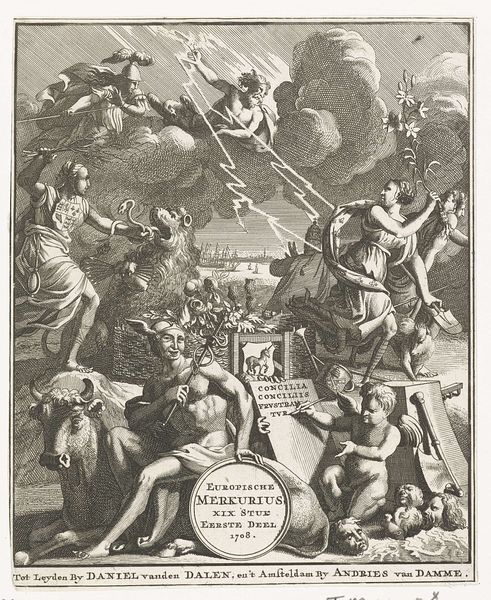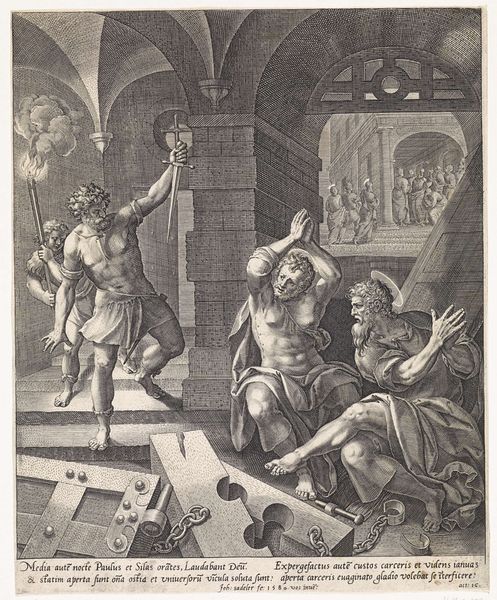
Dimensions: height 252 mm, width 282 mm
Copyright: Rijks Museum: Open Domain
Curator: Welcome to the Rijksmuseum. We're standing before Cornelis Cort's engraving, "Musica," created after 1565. It’s an allegorical representation of music, rich in detail and symbolism, showcasing the cultural importance of music in the late Renaissance. Editor: My first impression is one of structured harmony, if that makes sense viewing a print. The artist skillfully arranges the figures and instruments into a visually balanced composition. The lines create depth. There's a distinct sense of order in the chaos of instruments. Curator: Indeed. Cort's piece comes at a fascinating time. Printmaking was flourishing, allowing for the widespread dissemination of ideas. Representations like these played a role in defining music’s status and impact. The allegorical figures give musical practice an aura of cultural importance and intellectual respectability, countering its perception as a simple form of entertainment. Editor: The texture achieved through engraving is truly remarkable. Look at the intricate patterns on the harpsichord, the way the light plays across the strings, and the shading that defines the forms of the figures. It adds visual and tactile qualities which draw me in. Curator: Notice also how musical instruments emblematic of the era surround the musicians, subtly embedding the artistic endeavor within its own context. Consider that many viewers would see the values and social conventions the image suggests through public accessibility as prints gained traction across society. Editor: I'm struck by the gaze of the female figure playing the keyboard—direct, confident. She seems to anchor the entire composition. It’s almost like her visual stability is reflective of how integral the instrument is to the whole structure. Curator: Exactly. And remember, music, like other liberal arts, held specific social value. The engraving participates in defining and maintaining cultural standards by presenting music as an elevated practice tied to classical ideals. Editor: Looking again, the organization into sections also reflects the harmonies. The light sources fall selectively, adding to its texture, form and ultimately harmony in musical representation, which feels clever, but also very appropriate and satisfying for visual experience. Curator: Prints, at this time, became social tools. An artwork like Cort's Musica doesn't only reflect, but actively shapes cultural attitudes towards the arts. Editor: Ultimately, what stands out is how well the formal arrangement enhances meaning. Curator: A powerful testament to music's value. Editor: Indeed, and Cornelis Cort offers an aesthetically stunning commentary for us to take forward.
Comments
No comments
Be the first to comment and join the conversation on the ultimate creative platform.
